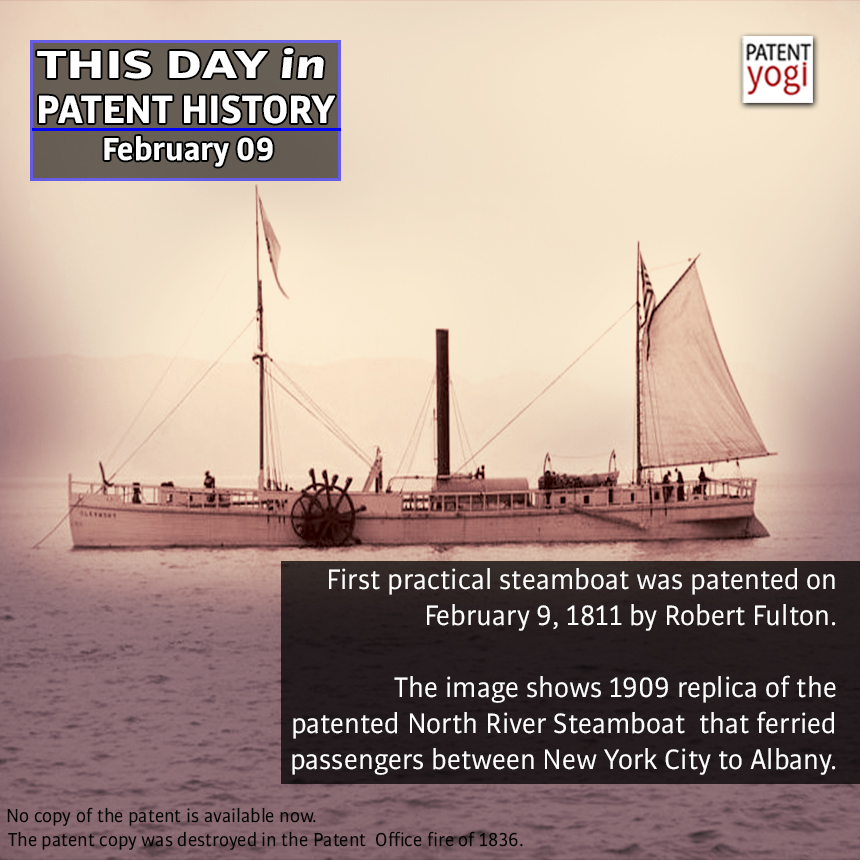
His steamboat went with passengers from New York City to Albany and back again, a round trip of 300 miles, in 62 hours.
No copy of the patent of the steamboat survived to this day. The copy at the patent office was destroyed in the 1936 Patent Office fire. However, Fulton’s notes were discovered from one of his heirs. In the notes, Fulton claimed that the essential parts of his invention of the steam-boat were fourteen in number, listed below:
1. The mode of communicating the power from the piston rod of the engine to the water wheels without the common beam and in such a manner as not to strain or impair the boat.
2. I am the first who discovered the superiority of water wheels over other modes for gaining a purchase on the water, and I am the first who applied water wheels to a steam boat. They are described in the specification, one on each side of the boat and their number of arms, diameter, and size of propelling boards minutely detailed.
3. The wheel guards around them are also detailed.
4. I have shown that steamboats must be built four or more times the length of [p.340] breadth of beam; all sloops and river craft are three times the length of their breadth of beam.
5. The bow and stern should be sharp to angles of at least 60 degrees. The bow should not be full like sloops, for two reasons; that being long they cannot rise on the waves like sloops but must cut through them, and being sharp the resistance is less.
6. After mentioning the combinations the success in building a steamboat depends upon knowing how to calculate the resistances, the proportions, and velocities of the parts and for this purpose the rules are laid down exact, in
7. A table of the resistance of the water and how to calculate the total resistance of the boat while running from one to six miles an hour, unless this be first ascertained it would be impossible to tell what strength of steam engine would be required.
8. The specifications show the power necessary to drive the boat and the power consumed by taking the purchase on the water and thus arriving at the whole power required the power of the steam engine may be calculated.
9. Shows the size of the cylinder, the piston running two feet a second.
10. Shows the diameter and velocity of the water-wheels.
11. Shows the size of the propelling boards.
12. I am the first who combined sails with steam to drive a boat.
13. Shows the steering wheel and pilot near the middle of the boat and over the station of the engineer. 14. How to get the merchandise in steamboats up rapids.
Robert Fulton was also commissioned by Napoleon Bonaparte to design the “Nautilus”, which was the first practical submarine in history.

Courtesy – Wikimedia

Courtesy – Wikimedia
Robert Fulton is also credited with inventing some of the world’s earliest naval torpedoes for use by the British Royal Navy.
Sources: Todayinsci; Wikipedia; Wikipedia; Wikipedia
